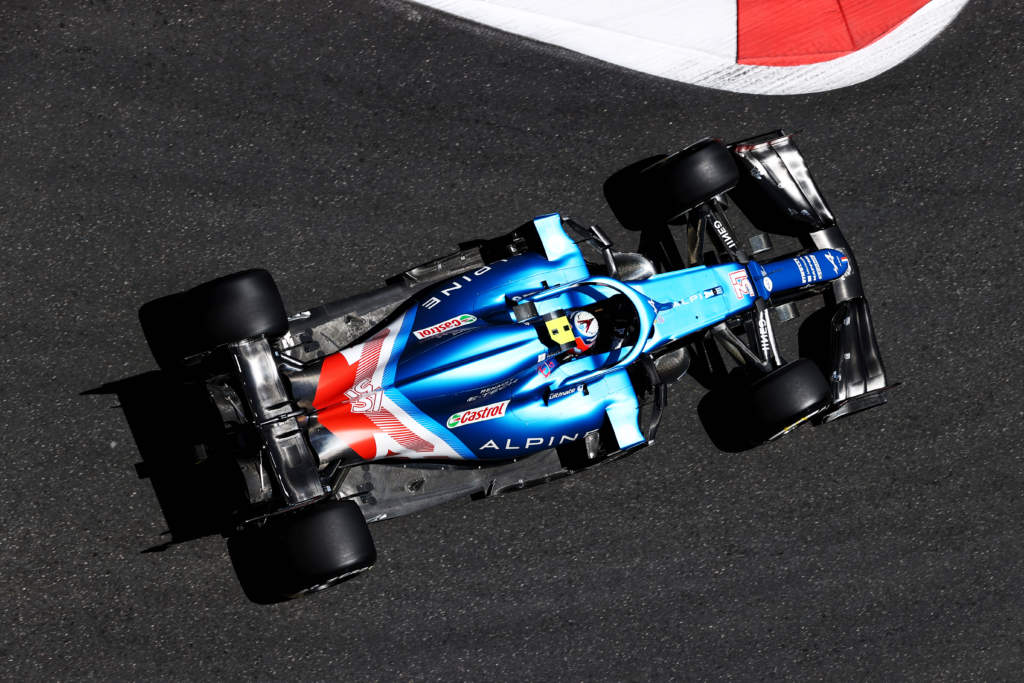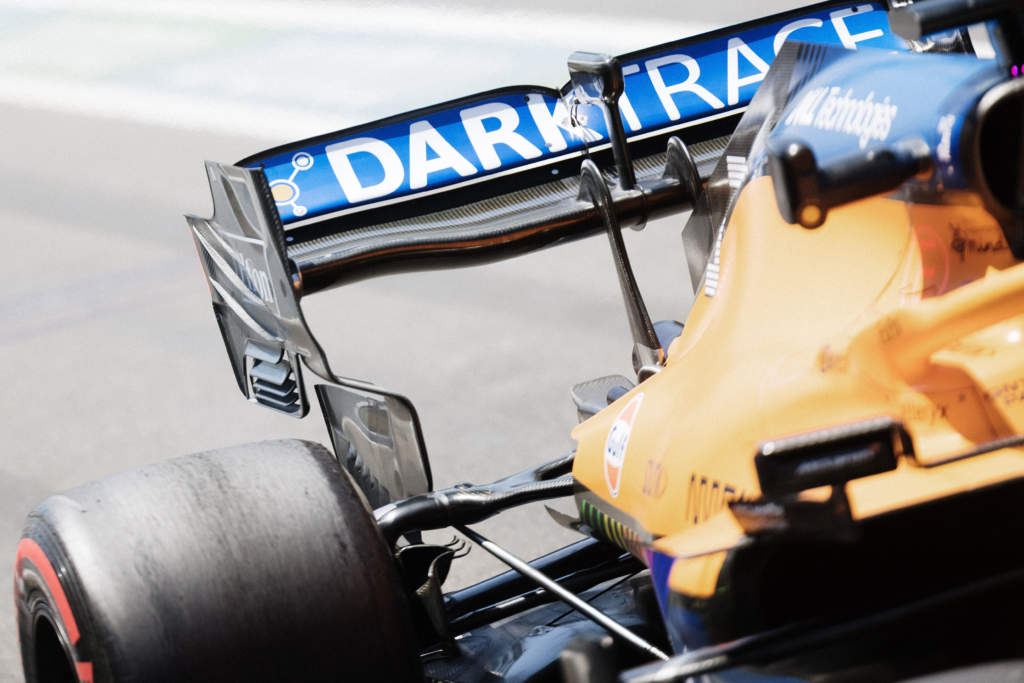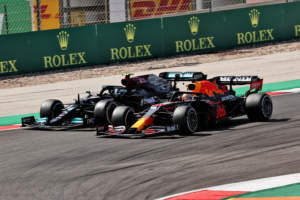Alpine Formula 1 executive director Marcin Budkowski says he would be “very, very surprised” if a rival team protests flexing rear wings at the Azerbaijan Grand Prix.
The FIA has added stickers to every F1 car’s rear wing and will be monitoring them for excessive flexing in Baku, where the likes of Mercedes and McLaren have hinted at a potential protest.
It comes amid concerns the rear wings on some cars, including the championship-leading Red Bull, are deforming too much on-track.
These wings are passing the existing load tests outlined in Article 3.9 of the technical regulations but the suggestion is teams have found a way to satisfy that part of the rules while deforming excessively on track in a way that contravenes Article 3.8, which relates to the movement of parts with aerodynamic influence.
Increased load tests will be implemented from the next race in France as part of a technical directive enforced by the FIA but these tests are only performed off-track when the cars are stationary.
The positioning of stickers on the rear wings in Baku is designed to help the FIA monitor the movement of each rear wing, having told teams it will use video footage to help judge compliance on-track.
Mercedes and McLaren are unhappy with the delayed introduction of the new tests – which will force teams like Red Bull, Alpine, Ferrari and Alfa Romeo to adapt their rear wings – because they believe the designs are against the rules and these teams have been given an extra opportunity to use them.
That was also the case in Monaco but it is more sensitive here because Baku has the longest flat-out section on the calendar and there will be a greater advantage in having a rear wing that bends to a lower angle on the long straights then snaps back into shape for the corners.
Budkowski has insisted that the Alpine design is legal and suggested a protest is unlikely because of the process outlined by the FIA to deal with this.

“It’s the right of the FIA to introduce new constraints, new tests on wings or on any part of the other car and that’s absolutely fine, that’s part of the process, we accept it,” Budkowski told Sky Sports F1.
“We design our wings to the regulations. We also design the wings to be light, because we’re looking to save weight on the car, and especially at the rear of the car.
“We’ve run our tests, we have to change some of our wings for the next race, where the TD falls in place. I believe, to be honest, it’s the case of most of the teams around the pitlane. We’re working on that and our wings will be will be compliant.
“Whether there’s gonna be a protest here, I’d be very, very surprised.
“Because the FIA took the problem in its hands, put new constraints that apply from France, and they gave a reasonable time for the teams – a minimum time really for the teams – to actually change the wings.
“It’s not about slapping some carbon on a wing. They are structural items that are pretty safety critical, especially here in Baku on the straights with the walls close by.
“The last thing you want is people playing around last minute with their wings in the garage, and actually breaking a wing.
“The process is right, the FIA’s done their job, and from France we have new constraints and we’ll respect them.”
The difficulty with policing the deformation of the rear wing is that the part of the rules McLaren and Mercedes are focusing on, Article 3.8, technically renders all aerodynamic parts on all cars illegal because there will inevitably be parts flexing when attached to a car moving at high speed.
That puts the emphasis on the FIA to determine, somehow, what is considered an acceptable amount of flexing.

McLaren team boss Andreas Seidl said on Friday morning in Baku that this measurement had not been communicated to teams.
Budkowski echoed Seidl’s sentiment that the FIA needed to set the limit but argued that had been done in the form of the load tests, and so reiterated his point that giving teams time to adjust to new restrictions was only fair.
“The reality is, everything’s flexing on a car,” said Budkowski.
“They are cars that are made in carbon that are running at more than 300km/h and tonnes of downforce on these parts.
“Everything’s flexing a little bit. The question is is it flexing too much, and are teams trying to exploit the flexibility for performance?
“But the reality is you can’t prevent a wing from backing off a little bit under load, or going down, because of the massive load it takes. The question is by how much. And it’s for the FIA to say ‘this is what we’re happy with, and this is what we aren’t [happy with]’.
“The set of regulations said ‘this is what we’re happy with’. Now they decided actually, they want to make them tougher.
“Fair enough – give us the time to change the wings. Which they’ve done and we’ll comply to that.
“You have to set a line and that’s what the FIA is here to do.”


